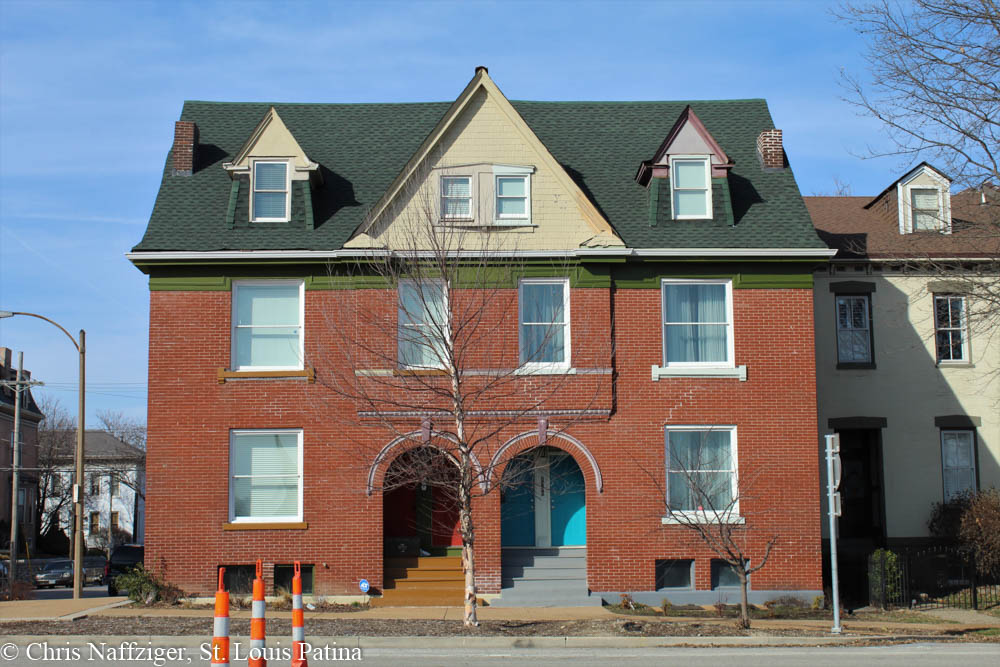
We’ll first take a look at these nice houses on Dolman above, which would fit in well in Soulard, but then we turn right onto Lafayette Avenue, which has changed dramatically in the time when it was first settled before the Civil War. I’ve looked at the block to the east before, with its distinctive storefront, so we’ll head west.
Looking at Compton and Dry’s Pictorial St. Louis, we realize that there was once a very dramatically different view on the south side of Lafayette Avenue than the ugly onramps for Interstates 44 and 55. Making use of underground caves, Christian Staehlin’s Phoenix Brewery stood here in different forms until the mid Twentieth Century.
The houses on the north side of the street have not changed much in appearance or construction much since what I would suspect was before the Civil War. I imagine they were built for or by the employees of the Phoenix Brewery across the street.
This row of houses looks like the houses I was so accustomed to seeing in my time living in Washington, DC, which were built in the early years of the young capital.
This apartment building was probably built towards the end of the Nineteenth Century, as more worker housing was needed for the expanding brewery.
The Phoenix Brewery is not the best known establishment in St. Louis history, but it was an early presence in Lafayette Square, all the way back to the 1850s.
August Gast after John Gast, Christian Staehlin’s Phoenix Brewery, 2nd Carondelet and Lafayette Avenues, c. 1955, Missouri History Museum, N33419
Richard Henry Fuhrmann, Photo by Emil Boehl, Christian Staehlin’s Phoenix Brewery, 18th and Lafayette Avenue, 1870, Missouri History Museum, P0764-00328-4g







